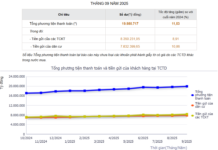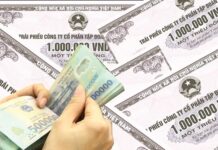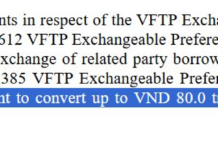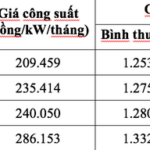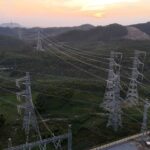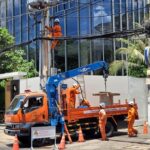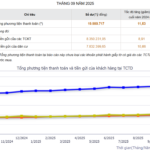Electricity Rates Range from 843 to 2,251 VND/kWh
Vietnam Electricity (EVN) has finalized the proposal titled “Development of a Two-Component Electricity Pricing System (Capacity and Energy Prices) and Implementation Roadmap for Vietnam’s Power Sector,” as directed by the Ministry of Industry and Trade.
The two-component pricing system includes the maximum capacity usage charge and the energy consumption charge. Accordingly, consumers’ electricity bills will consist of two parts: a fixed charge for capacity usage, reflecting the fixed costs of electricity supply, and a variable charge for energy consumption, reflecting the variable costs based on actual usage.
The Ministry of Industry and Trade has approved the pilot implementation of the two-component retail electricity pricing system on paper starting October 2025.
The pilot will apply to production customers directly supplied by EVN and its subsidiaries, with an average monthly electricity consumption of 200,000 kWh or more (calculated over the last 12 months).
Statistics show that approximately 7,000 customers meet this average consumption threshold.
EVN has also released the pilot two-component electricity pricing schedule, effective from October 2025. The rates are categorized by voltage levels (high, medium, and low voltage) and usage timeframes.
The capacity charge for high-voltage customers (110 kV and above) is 209,459 VND/kW/month; for medium-voltage customers (22–110 kV), it is 235,414 VND; for medium-voltage customers (6–22 kV), it is 240,050 VND; and for low-voltage customers (below 6 kV), it is 286,153 VND/kW/month—the highest rate in the schedule.
The energy charge during normal hours ranges from 1,253 to 1,332 VND/kWh; during peak hours, it ranges from 2,162 to 2,251 VND/kWh; and during off-peak hours, it ranges from 843 to 904 VND/kWh.
Normal hours are from 4:00 AM to 9:30 AM, 11:30 AM to 5:00 PM, and 8:00 PM to 10:00 PM daily, except Sundays (4:00 AM to 10:00 PM). Peak hours are from 9:30 AM to 11:30 AM and 5:00 PM to 8:00 PM daily (except Sundays). Off-peak hours are from 10:00 PM to 4:00 AM the following day.
EVN emphasizes that this is a paper-based trial and will not affect actual electricity bills during the pilot period.
Consumers Can Proactively Reduce Costs
Regarding the new pricing method, Mr. Nguyễn Quốc Dũng, Head of the Business Department at EVN, stated that two-component pricing has been implemented in many countries. This method accurately reflects the system’s investment in meeting load capacity demands.
According to Mr. Dũng, using two-component pricing will encourage customers to use electricity more efficiently. “Previously, customers had to reduce energy consumption to save costs, but now they can optimize their usage patterns to pay less,” he explained. With two-component pricing, customers have more options to adjust their behavior and reduce capacity usage, thereby lowering costs.
 With two-component pricing, customers can adjust their usage patterns to reduce capacity charges and lower costs. |
Assessing the impact on customers and EVN, Mr. Dũng noted that for customers with higher usage times and larger Tmax (higher load factors), the average electricity rate will decrease. Usage patterns determine system costs, which in turn affect customer rates.
After the pilot, EVN will make adjustments and plans to implement the system in 2026.
Previously, at a meeting on two-component pricing in early September, Minister of Industry and Trade Nguyễn Hồng Diên announced that the system will be applied to large electricity consumers starting January 1, 2026.
From October to December 31, 2025, two bills will be issued concurrently: one based on the current mechanism for actual payment and one based on the new method for customer reference and self-adjustment.
Initially, the system will apply to large customers, excluding policy beneficiaries. Later, when implemented more broadly, peak and off-peak rates will ensure greater fairness.
Tâm An
– 05:45 12/10/2025
Pilot Program to Implement Two-Component Electricity Pricing Starting October
Vietnam Electricity Group has announced that starting from October, power corporations and electricity companies will begin sending trial electricity bill calculation results on paper to pilot group customers. These notifications will include a comparison between the current single-tier electricity rate and the two-tier pricing model.
EVN Officially Tests New Electricity Pricing on Paper: Detailed Rate Breakdown
EVN is set to pilot a two-tier retail electricity pricing model on paper starting October 2025, targeting manufacturing customers with an average monthly consumption of 200,000 kWh or more.
Is Two-Tier Electricity Pricing Cost-Effective?
Implementing a two-part electricity pricing structure ensures accurate and comprehensive cost calculations, effectively eliminating cross-subsidies. However, it does not guarantee lower overall expenses.





